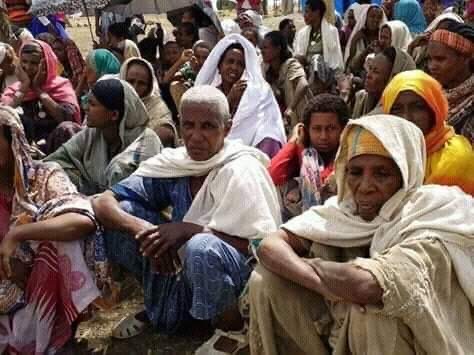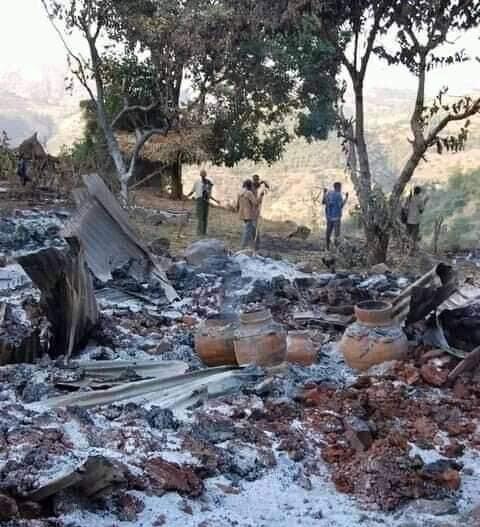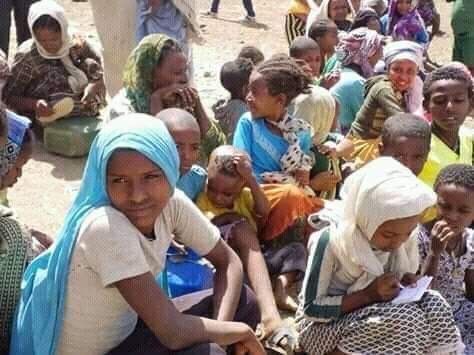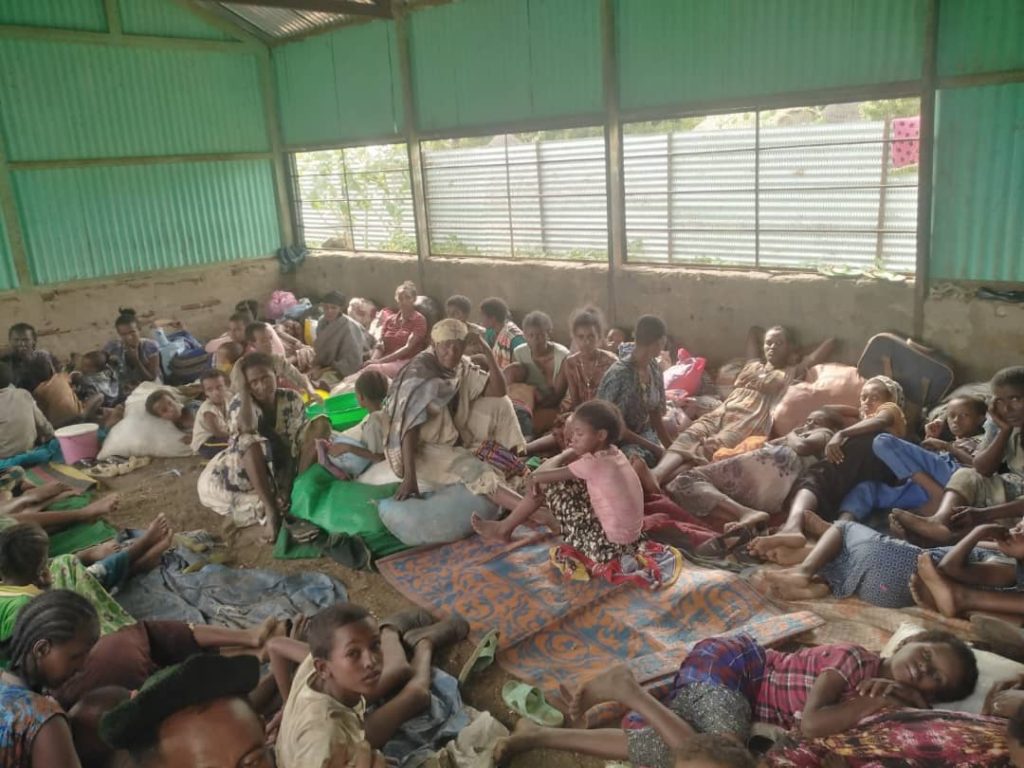November 18th, 2021
The Kemant (also known as the “Qimant” or “Kimant”) are one of Ethiopia’s many distinct indigenous ethnic groups, and live in north-west Ethiopia in the Amhara region. As one of Ethiopia’s minorities, very little is known about them among the international community. But this fact, as well as the very little attention their plight has received, does not just come down to a numbers game – it is also due to systematic efforts to forcefully assimilate the Kemant people by the regional state. To gain insight into the story of the Kemant, OLLAA conducted an exclusive interview with two members of the Kemant community, hoping to shed light on one of Ethiopia’s most overlooked cases of human rights abuses.

“There will be no more Kemant”: The struggle for survival
Targeted violence against the Kemant has been escalating since 2015 and has involved the “abduction of children, illegal detention, torture, systemic rape and murder”, says Abeba, who is a member of the minority ethnic group and president of the Kemant Advocacy Group. This violence reached new levels following a referendum in 2017 when the Kemant voted to form their own administrative jurisdiction and continues to this day.
Although largely hidden from international media and subjected to strenuous denials by the Amhara State, there has been documentation of large-scale attacks on the Kemant community in the Amhara region by Amnesty International and other human rights organizations. In May 2020, Amnesty International wrote:
“Amnesty International’s report reveals that the Liyu police, local administration militia and two Amhara youth vigilante groups joined forces to attack members of the Qimant community in January 2019, and again in September-October 2019, leaving at least 100 people dead and hundreds displaced. Qimant homes and property were also destroyed.”

According to Abeba, the attacks go much further, but retaliation from regional forces to those who speak out make getting information difficult: she tells us that some of those individuals that spoke to Amnesty International were subsequently arrested. Abeba, who has been facing threats to her life since 2015, has described horrifying acts of ethnic cleansing by these actors, with women (including pregnant women), children and university students often the targets, in what she describes as efforts to ensure “there will be no more Kemant”. Our other witness, Negesu, also from the Kemant ethnic group, recounts how her youngest brother was shot and killed when he was just seventeen years old.
Members of the Kemant community have blamed the Amhara special forces and youth-led armed militia Fano for the attacks, accounts which have been corroborated by organizations such as Amnesty International and Al Jazeera. A witness interviewed by Al Jazeera described how local militia Fano “have dragged people from homes and butchered them in the streets.”
Negesu (whose family is pictured in the title image) is one among many Kement who have lost their entire families in the attacks in September, 2019. After being subjected to escalating threats and attacks since 2015, Negesu’s four brothers and sister were at home celebrating a religious festival when their home was set alight. According to Negesu, when they tried to escape from the burning building, her family were shot at with machine guns by Fano, regional special forces and police. Only one of Negesu’s brothers, who was shot and wounded, managed to escape. He is still hiding from the perpetrators today.
As corroborated by the Amnesty International report, Negesu describes how Ethiopian Defence Force soldiers, based in a camp just 5 minutes away, failed to come to their assistance.
Negesu, who was living in the United States when the attack occurred, is still deeply affected by the events that have left her without her family. In one of the events OLLAA attended, Negesu could not hold back her tears when she talked about how she lost her whole family at once. Her brothers and sisters, who had so many hopes and dreams, can no longer call her; instead, says Negesu, “I am alone… I can see them running from the fire. I cannot forget.”
Negesu’s singular story reveals the brutality of the Amhara regional government in its targeting of minorities within its territory. It is important to understand and shed light on how minorities are treated in the Amhara region and why the federal government has failed to protect minorities; enabling such ethnic-based targeting to occur.

The Amhara region is made up of many different ethnic groups. Yet today, most (including Kement, Agew, Argoba, and Oromo) are fighting against the Amhara regional government. The Amhara region is the only region that is openly calling for the current war to continue against Tigray – or what they call “junta”. Amhara youth militias known as Fano and Amhara elites are adding fuel to the fire by directly participating in the current war, which has targeted Tigrayans and anyone else not supporting the Prime Minister’s Prosperity Party. It is this attitude of “if you are not with us, you are against us” that has left minority groups such as the Kemant in the line of fire as conflict in the north escalates.
Who are the Kemant and why don’t we hear about them?
The last Ethiopian census to include the Kemant people was in 1994, which placed their numbers at 172,000 (although this was likely a significant underestimate). Of the more than 90 distinct ethnic groups found in Ethiopia, the Kemant were the 10th largest group at that time. Despite this, in 2007, when the next census was due, the decision was made to remove the Kemant from the list of ethnicities, forcing the Kemant people to identify themselves as Amhara or “other” on their federal ID cards.
This was not merely an administrative oversight. According to Abeba, members of the Kemant minority that tried to appeal this, or register as Kemant were told by regional security forces that they would be arrested if they did so. Found within the administrative region of Amhara, the Kemant are neither recognised as a nationality in the 1994 Amhara Constitution, nor the Revised Amhara Constitution of 2001 – effectively rendering the Kemant people invisible within the diversity of Ethiopia. Despite this, it is estimated that their current population is significantly higher, with as many as 1.5 million self-identifying as Kemant. This has had significant consequences for the Kemant people, who historically have a distinct and ancient language, religion and culture, and are thought to be the original inhabitants of north central Ethiopia.
In 1995, the Ethiopian Constitution gave birth to a federal system of ethnically delineated regions, which granted considerable autonomy to each group for self-determination and self-rule. For a minority like the Kemant – who have been effectively removed from the list of recognized ethnic groups – this removed their capacity for self-administration. Not only does this imperil the survival of what is a distinct culture, it also removes their capacity to represent themselves at a political level.
When, in 2015, after long calls for representation, the Kemant living inside the Amhara state received self-administration status, harsh penalties were swiftly enacted by regional militias. Abeba describes how in 2016, an entire village was burnt to the ground, killing more than 100 civilians and displacing up to 35,000 others. Events, which, as described above, have only gotten worse in the intervening years. Much of this appears to stem from the resistance of the Amhara state to losing territory – despite self-administration being a clearly set-out right in the Ethiopian Constitution.

The dire consequences of the war in the north
Since the outbreak of war in Tigray and into the Amhara region, the Kemant people have increasingly found themselves caught in the crossfire. Already facing years of documented attacks against their people, the escalating situation has aggravated previous tensions and heightened vigilante attacks against the community.
Recent investigations and satellite imagery analysis by Al Jazeera found that at least 557 civilian structures had been destroyed in Kemant-inhabited areas since May, 2021. Despite claims to the contrary, Al Jazeera confirmed that these investigations point to the Ethiopian military and allied militias such as Fano as the culprits behind the destruction. Thousands of Kemant have brutally lost their lives, homes and livelihoods in these attacks, with many left to live in fear on the streets or in the desert.
According to the UNHRC, at least 2,000 ethnic Kemant have fled to a refugee camp in Sudan since April. Many face the same situation as Negesu and Abeba: the loss of their loved ones in brutal, ethnically targeted attacks, and daily threats to their lives. In a time where entire families and communities face violence for the simple fact of their identity, we hope to raise the voices of Negesu and Abeba and share their stories with the wider community..
As Negesu says: “I urge everyone to stop the genocide against the Kemant people. I want justice for the people that have lost their loved ones.”
“I want someone to be my voice”.
Currently, Abeba tells us, there are reports of government forces kidnapping and forcibly recruiting Kemant victim survivors – aged anywhere from 12 to 62 years old – to join what has been described as a battle over the country’s existence by government figures. Much like the cases documented by OLLAA, Abeba tells of how those who try to run away get shot and killed, and that in Gondar and surrounding areas, jails, prisons and schools are currently full of Kemant detainees. Many are also ordered to contribute what little left food they have to the war instead of feeding their children.
OLLAA calls on the international community to condemn the Amhara regional government for its crimes against humanity against minorities in the Amhara region, as well as the role of Amhara regional forces, militia and Fano in the violence in Tigray. The current push for dialogue and ceasefire will not bring lasting peace if the voices of the forgotten minorities in the Amhara region are left out.
We call for the international community and humanitarian organizations to help the hundreds of thousands of Kemant victims in need of food, shelter and medical care for survival, who have thus far been denied humanitarian assistance by the Amhara regional government and Ethiopian Government.

